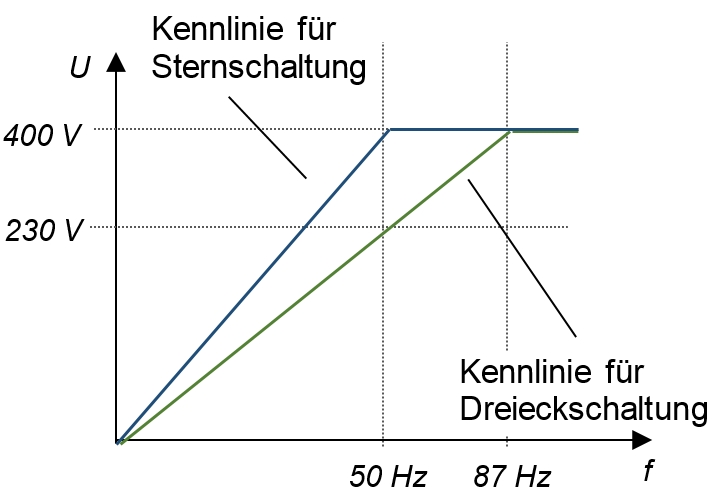3. When is the 87 Hz characteristic curve used in the inverter?
The 87Hz characteristic curve is used when a constant torque at high speed is required.
Here is an example:
An electric motor with 1.5 KW, 230/ 400V/ D/Y, 50 Hz, 1430 rpm, 3.21 A in a star connection is converted to a delta connection. The coil voltage is then 3x 230 V, but is designed for 3 x 400 V. The three-phase frequency inverter achieves this at 87 Hertz.
The motor data described above is thus multiplied by the factor √ 3 (1.73). At 87 Hz, they increase to 2.6 KW, 400 V, 2474 rpm and 5.55 A at a constant torque.
This means that the frequency inverter must be adapted to the higher amperage. For this application, at least a 1- or even 2-series larger frequency inverter will have to be used.
Important note:
Use above 50 Hertz should only be for short periods. Due to the increased mechanical losses and the resulting higher thermal load, the use of a next larger three-phase motor is recommended.

